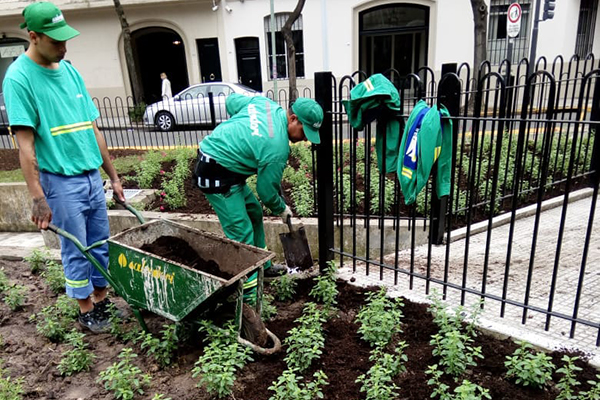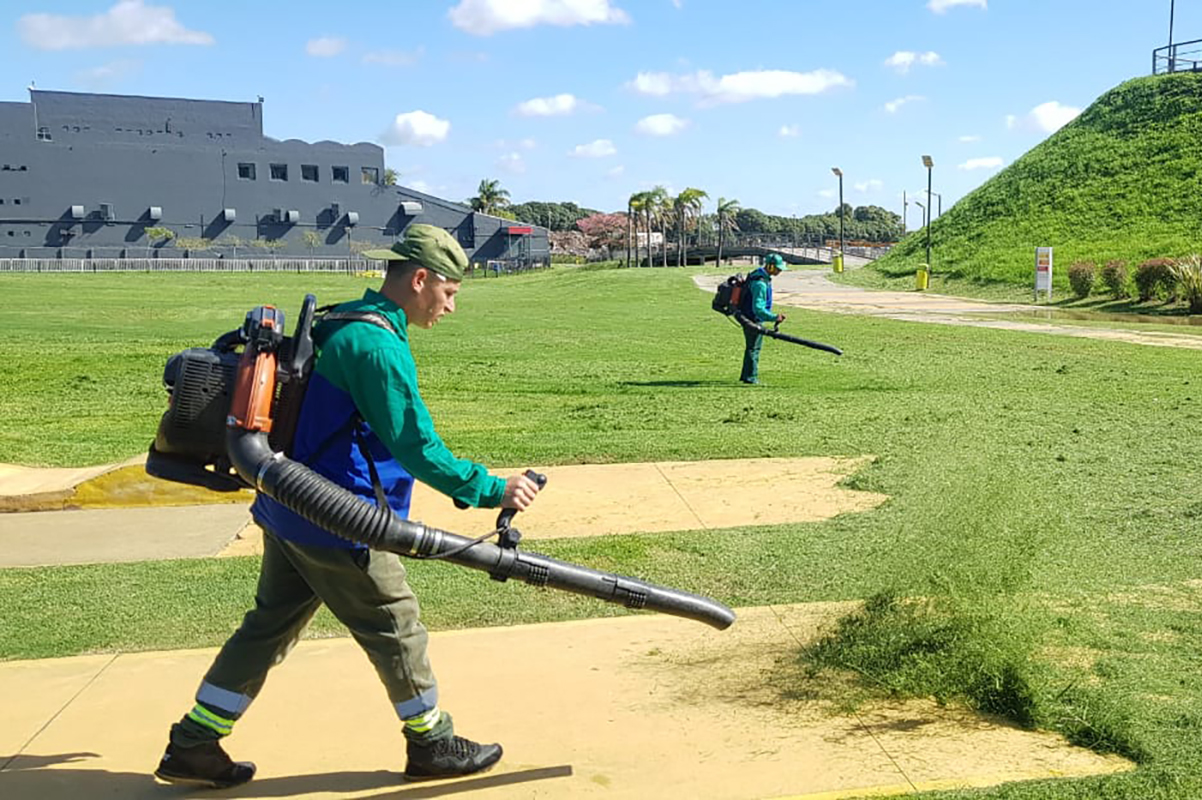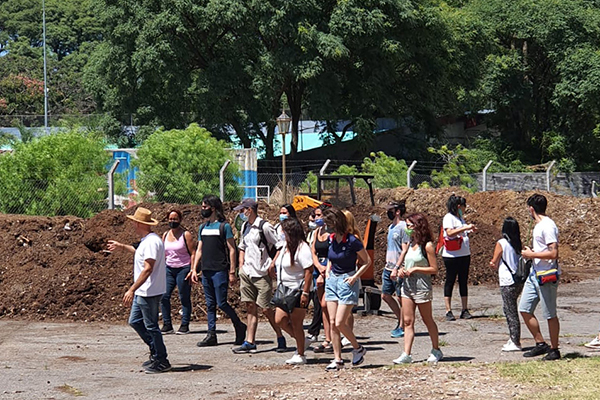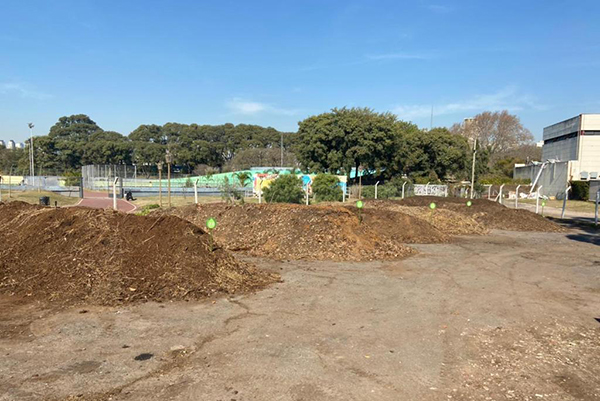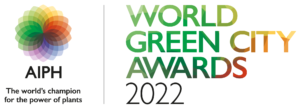Addressing the urban challenge
Breadth of the issue – How are the problem(s) that are being tackled by your initiative affecting citizens/local businesses or a significant component of the local wildlife?
The high generation of waste, and its consequent disposal in landfills affects the 3,000,000 people who live in the City of Buenos Aires, but also the inhabitants of the cities where the landfill is located.
The lack of organic matter and nutrients in the soil affects the entire City of Buenos Aires, which has an area of 203 km2.
Added to that, as it is a coastal city, there are many areas that were reclaimed from the river with fill material, and the ground does not have a 0 horizon.
Depth of the issue – How seriously are the problems being tackled by your initiative impacting the life of the citizens/businesses/wildlife concerned?
Waste disposal generates various negative impacts on the environment and on the population that inhabits it, such as contamination of soil, groundwater, surface water, generation of methane, loss of biodiversity and loss of quality of life for citizens.
The City of Buenos Aires is disposing of about 2,800 tons of waste per day in the sanitary landfill, which has a limited useful life. That is why it is imperative that maximum efforts be made to separate waste at source and manage it properly.
Also, the loss of organic matter, nutrients, and soil compaction, is generating a loss of biodiversity, both flora and fauna, and therefore, the ecosystem services provided by them.
The power of plants and natural ecosystems to deliver benefits
How is the initiative shaped by scientific evidence of the potential for plants and natural ecosystems to deliver benefits?
The Composting Centers receive green waste that was originally sent to landfill, mixed with other waste. Now, through a composting process, compost is generated and used to improve soil conditions in the City, guaranteeing the appropriate growth of vegetation and developing the strengthening of natural spaces within urban ecosystems. This project is part of the concept of circular economy, since not only is the disposal of waste avoided, but it is also transformed into a resource.
Likewise, the project generates a strong reduction of greenhouse gases by avoiding the anaerobic degradation of waste in the landfill, and by reducing the transport associated with compost brought from outside the city.
The compost generated in the Composting Centers complies with local regulations on production and use (Joint Resolution 01/2019), reaching local, national, and international standards.
It has been empirically proven that the compost used in green spaces works as: a) natural fertilizer, providing essential nutrients; b) providing organic matter, for the development of a microbiota associated with the roots and protecting them from possible infections; c) avoiding the compaction of soils and favouring the entry of oxygen into them; d) regulating humidity, reducing the need for irrigation; e) regulating the ph. All these characteristics generate a better growth of vegetation, increasing the survival and strengthening the health of the specimens.
How has the city exploited the potential of plants and associated ecosystems to deliver more than one benefit?
The maintenance of green spaces is essential for citizens. The pandemic concisely demonstrated that green spaces are a source of health and well-being for people. That is why it is very important not only to favour the creation of more green spaces, but also to carry out their correct maintenance.
Proper care allows flora to develop with greater force. An appropriate soil generates the optimal conditions for the vegetation to grow and along with it, all the associated fauna. There are innumerable ecosystem services provided by plants, shrubs, trees, and the ecosystems created by them.
Green spaces regulate temperature and humidity, produce oxygen, filter radiation, absorb pollutants and dampen noise. In addition, they create spaces where you can enjoy a walk, do physical activity, or walk your pets.
The care and maintenance of the vegetation is a very important operation so that these green areas continue to exist and expand, and the contribution of substrates, such as compost, is a fundamental task in the maintenance of these spaces.
Innovative and Collaborative Solution
How does the initiative show evidence of feasibility, including on-going financial and logistical support?
The method of adding value to green waste through aerobic composting, in piles, is highly effective, with very good results and low cost, compared to other techniques. Also, it is easily scalable with low investment.
Today in Argentina the treatment per ton using this technique is slightly higher than the final disposal. However, if we take into account that the disposal of these low-weight, high-volume materials is associated with high primary collection, transfer, and transportation costs, the cost per treatment ends up being lower.
On the other hand, we must also consider that with the implementation of this practice, savings in environmental costs, carbon footprint, hours lost in transfers are generated.
Finally, the savings generated by avoiding the purchase of compost should also be considered.
Costs of treatment, personnel, fuel, and basic maintenance, reach USD 36 per ton.
In what ways is the initiative innovative?
Although the development of the composting practice is ancient, the generation of compost within a city this large is something innovative. To achieve this, places were looked for where, due to their extension and vegetation, they generated a large amount of green waste, and it was determined that, in order to avoid transport, it was better to value them in situ.
The City aims to create many small Composting Centers instead of one large one, as it turns out to be more efficient in terms of reducing waste transportation.
Likewise, the Composting Centers function as awareness centres for neighbours, school students, universities, public officials, companies, etc. These Centers are places where visitors are received and a tour of the different sectors of the Centers is carried out. In this sense, creating a place where, in addition to process the material, it is possible to directly raise awareness among people, turns out to be innovative.
How is the initiative supported by collaborative working across disciplines and sectors?
To develop properly this project, it is required the intervention of different actors. The first link in the chain are the operators of the maintenance companies of the parks and squares. Until 2017, they saw the material they were collecting and bagging as waste, and no one knew where that material ended up.
However, these operators were trained, and they began to understand that if they properly separated the material, a greater amount of compost would be generated, a product highly valued by them. In this way, they no longer see the waste as such, but as a resource.
On the other hand, we work together with architects and landscapers since they come in search of compost to use in their respective projects, knowing the benefits that the material provides.
Likewise, we work together the municipal nursery, since they require quality substrates for the specimens of native species that they develop.
Finally, people arrive at the Composting Centers looking for material to carry out artistic interventions. On one occasion they were looking for branches of a certain size for a play (which was exhibited in one of the most renowned theatres in Buenos Aires). People also arrive looking for larger logs to make wooden sculptures.
How does the initiative demonstrate evidence of community support?
Many residents of the neighbourhood, especially of the North Composting Center (since it is close to residential areas), bring us their own green waste. In the Center itself there is even a community compost bin for food scraps, and the neighbours also bring that material there.
On the other hand, nearby schools and offices collect their own green waste and bring it to the Center, and when they do so they also remove compost.
Additionally, we have been asked for compost for the development of different orchards, for projects such as Puerto Pibes, Huerta Barrio 21, Fauna – FAUBA, Vivero Avellaneda, Huerta – San Lorenzo Project, Más Oxígeno, “Hands to the Earth” Project, Program ” Community Recreation.
Implementation, Impact and Replicability
How does the initiative demonstrate evidence of a track record of success against pursued objectives?
Annex number 1 shows the amount of material entered (green waste) in total from the 3 Centers over time, and the amount of compost generated.
How has the initiative had a ripple effect beyond the scope of the initiative itself, thereby demonstrating a change in the city’s and/or its partners’ way of working with plants?
With the opening of the first Composting Center, awareness about the correct management of organic waste has been gaining more and more strength.
Many public officials began to visit the Center and to internalize each time with the concepts of composting, compost, native plants, orchard, etc. It was basically for this reason that it was decided to open a second and a third Center, because they evidenced the benefits of this process: reduction of disposal, generation of a valuable input, savings in compost purchase costs, and low operating costs of the Centers.
Likewise, as in each visit to the Centers the visitors are given a bag with compost, various people have told us that thanks to this they have begun to compost in their own homes, in order to obtain their own compost for their plants.
How have other cities expressed interest in the initiative, or what potential does it have to interest other cities and be customised to their own circumstances?
Other municipalities in Argentina have visited the Composting Centers and have shown great interest in replicating the project in their respective cities, observing that it is not required very sophisticated technology, nor are such high investment costs.
The only thing essential for the project to be successful is having the technical knowledge of how to carry out a good composting process, how to combine the different input materials, how often to turn, when to hydrate the material, how to prepare the correct inocula, etc.
On the other hand, in 2017 the City of Buenos Aires has participated in a bipartite technical exchange project between Curitiba – Brazil and Buenos Aires. They, for their part, were interested in composting and we have given technical advice in how to install a plant, similar to the one in Buenos Aires, in an environmental complex in Curitiba. It began as a pilot facility, and over time the processing capacity increased, and the plant is still in operation today.
Sustainability and Resilience
What efforts have been made to reduce the carbon footprint of the initiative?
In order to reduce the carbon footprint of the project, reverse logistics has been implemented, where the compost is taken in the same truck that brings the green waste. As the ones in charge of carrying out the collection of the green waste are the same companies that carry out the maintenance of the parks and the flowerbeds of the green spaces, a truck is loaded with this material and after being unloaded in the Composting Centers, it is loaded right there with the compost, to later return to the parks. This makes transport more efficient and reduces greenhouse gas emissions.
On the other hand, it is being evaluated to transform the machinery used in the Centers (mainly crushers and sieves), into machinery with electric motors, in order to avoid the emissions generated by combustion engines.
How have the anticipated impacts of climate change been considered?
The three Composting Centers were strategically designed so that the green waste is transformed and reused within a radius very close to its generation, thus reducing the carbon footprint due to: a) the paradigm shift from final disposal to treatment through aerobic composting in piles and reuse of the generated compost; b) reduction of emissions generated due to travel over shorter distances and the use of smaller vehicles; c) optimization of shipments through reverse logistics.
On the other hand, a system has been implemented that allows rainwater to be recovered for reuse, by means of a flexible tank made of a geotextile membrane and connected by means of a pipe to the rainwater discharge.
Also, the importance of reducing the use of plastic bags for the transfer of some materials such as dry leaves, and encouraging the transfer in bulk, has also been considered.
What processes does the initiative include for it to be considerate in its use of soils and other natural resources?
This Project generates a natural fertilizer that can be used to considerably improve the soil conditions of the City of Buenos Aires, incorporating nutrients, organic matter, and structure to them. Many of the soils in the city are rocky soils with little organic matter since they were land reclaimed from the Rio de la Plata, therefore, in this sense, the incorporation of a natural fertilizer is extremely beneficial.
Monitoring, Maintenance, and Management
How has the initiative been designed and implemented so that long-term needs for management and maintenance are reduced and can be met?
The long-term implementation and scaling of the project includes progressively capturing more and more green waste, and starting with the necessary administrative processes to open a new Composting Center, in order to cover the 4 cardinal points of the City, and optimizing even more logistics, the volume of green waste treated, and increase the amount of compost generated, for the improvement of the City’s parks and squares.
What protocols are in place to facilitate monitoring of results?
In order to ensure the monitoring of the results, the following inspections are carried out:
Verification of bags in containers: Previously, the operators of the maintenance of the gardens bagged and disposed the bags in the containers for wet waste arranged in the public thoroughfare. That is why, to ensure the success of segregation at source, it is confirmed that there are no bags with green remains that should not be there.
Monitoring of the input material to the Centers: The operator of each Center has the task of uploading the amount of material that enters and the amount of compost that comes out per day on a digital spreadsheet.
Follow-up of the composting process: The operator submits a monthly report where the evaluated parameters of each batch (temperature, pH, humidity) can be observed, in order to determine if the composting process is developing correctly.
Laboratory studies: The operator carries out monthly laboratory studies of the material in process and the compost obtained. In this way, the quality of the generated material can be controlled.
Follow-up of the destination of the compost: Each maintenance company that receives the compost delivers a report with visual evidence, detailing what the material was used for.
How has the initiative been enhanced in response to monitoring of results?
The first months, after the opening of each Composting Center, the amount of material that entered to be processed was low. Although the companies that carry out the maintenance of the parks and squares had been trained, the operators themselves were not very motivated to change their usual practices, therefore, not much material was segregated at origin.
As the compost generated at the Centers began to circulate through the different green areas, more operators began to see the benefits and quality of the material and began to request more deliveries of compost. Just then, an interesting increase in the amount of material received and processed in the Centers began to be evidenced.
According to maintenance companies, the growth of grasses takes place in less time, and the flowering of some bushes is more evident. In this sense, the request for compost has grown strongly as of 2019.
















